‘The Lodge is said not to be closed, but to be called from labor to refreshment. The phrase is an old one, and is found in the early rituals of the eighteenth Century.’
—Mackey’s Encyclopedia of Freemasonry (1929)
When Hogarth heard this phrase ‘from labor to refreshment’, he conjured up a brothel scene in which a young prostitute had finished her ‘labour’ and was now enjoying some post-coital ‘refreshment’.
We see Harlot is sitting on her bed, still half naked after her ‘labour’ of love making. Her maid is making her a ‘refreshing’ cup of tea.
The full phrase is ‘from Labour to Refreshment … for profit and pleasure … at high twelve.’
Hogarth gives the Harlot a watch to show the prescribed time at which tradesmen traditionally took their lunchtime break.
The watch also represents the ‘profit’ which the whore has received for the ‘pleasure’ which she gave to the man who presented it to her. Only a thief would pay in stolen goods, and so Hogarth leaves clues that her most recent client was James Dalton, an infamous highwayman.

Figure 1 – James Dalton’s wig box balances precariously above the bed
IMAGE CREDIT: A Harlot’s Progress (1731) by William Hogarth – Attribution 4.0 International (CC BY 4.0)
Hogarth gives us a glimpse of a wild night of sex by balancing Dalton’s wig box over the bed. One side of the curtain points down at the Harlot while the other drapes around the bedpost.
The knot in these curtains resembles a head, giving us the image of Dalton’s face in mid-orgasm (see insert in middle).
Hogarth then shows us the position which the Harlot assumed during this recent fornication by picturing her cat in a suggestive position. It insinuates a rear entry.
Hogarth used this same cat posture to signify a brothel in his painting A March to Finchley.

Figure 2 – Harlot’s Cat and Finchley Cats
IMAGE CREDIT: A Harlot’s Progress (1731) by William Hogarth – Attribution 4.0 International (CC BY 4.0)
Hogarth adds another sexual detail to titillate his audience in the form of a condom, which is hanging to dry on the side of the wash basin. Early commentators mentioned ‘the filthy equipment of her night’s debauch ….’
Modern critics, however, mistook the used condom for a lemon rind, hanging off the side of a punch bowl. They assumed the stick was a ladle.
I have included a punch bowl from another of Hogarth’s works so you can see how the mistake was easily made.

Figure 3 – Punch Bowl with lemon is easily confused with a washing bowl and a used condom.
IMAGE CREDIT: A Harlot’s Progress (1731) by William Hogarth – Attribution 4.0 International (CC BY 4.0)
Prostitutes commonly reused their prophylactics. In the full-coloured print we see more of them drying at the back of the room. One is in line with an officer’s phallic shaped baton.

Figure 4 – A Harlot’s Progress – Scene 3
IMAGE CREDIT: A Harlot’s Progress (1731) by William Hogarth – Attribution 4.0 International (CC BY 4.0)
These officers are bursting into the prostitute’s bedroom to arrest her.
It is all part of the storyline. The Harlot has been thrown out of the luxurious apartments we saw in Scene 2, and now works in a bawdy-house where her clients include common thieves.
She is about to be arrested, and the next print (below) will show her in prison.
Can you work out what degree is being exposed here?
All will be revealed in next month’s installment.

Figure 5 – Next month’s riddle lies within Scene 4.
IMAGE CREDIT: A Harlot’s Progress (1731) by William Hogarth – Attribution 4.0 International (CC BY 4.0)
Clue – If Scene 1 gave signs of the First Degree, and Scene 2 concealed the Second. What will Scene 4 give us?
Artist: William Hogarth (1697-1764)

William Hogarth was made a Mason at the Hand and Apple Tree Lodge in Little Queen Street, Holborn, London c1725-28.
He later joined the Bear and Harrow in Butcher Row, known later as the ‘Corner Stone’ Lodge 4, and then Grand Steward’s Lodge. He designed a jewel known as ‘Hogarth’s Jewel’, it remained in continual use into the nineteenth century.
Hogarth was a prolific English painter whose scenes often demonstrated a satirical depiction of 18th century life.
He was responsible for the Copyright Act passed by Parliament in 1735 also known as the Hogarth Act.
Artwork: Tim Fowler
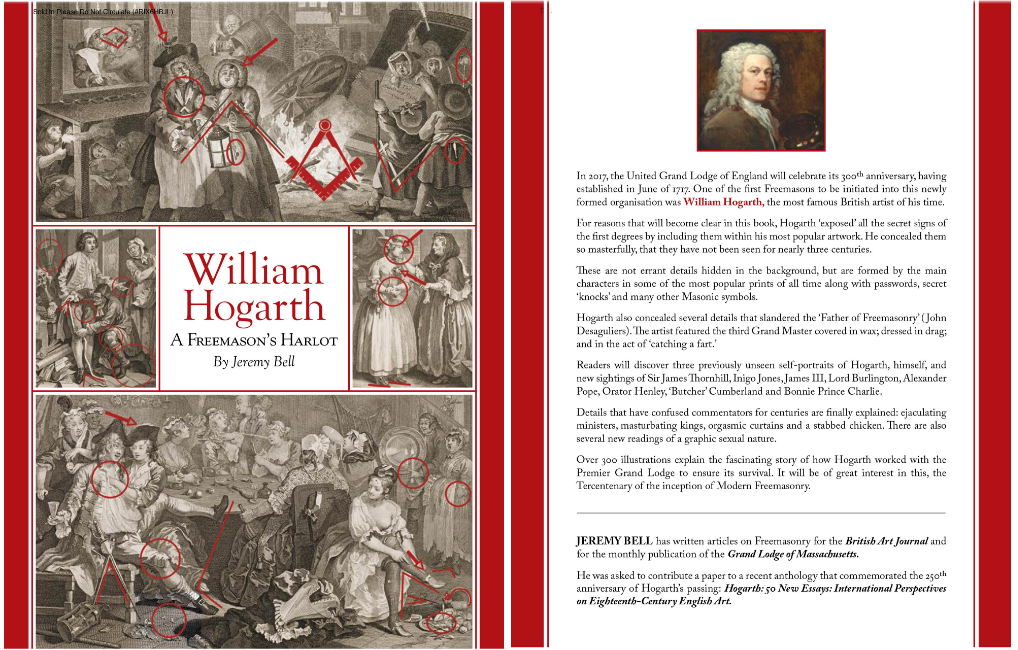
Many more details from the other scenes are explained in my book William Hogarth - A Freemason’s Harlot which is available from my website www.brotherhogarth.com.
Email me at Brotherhogarth@gmail.com. I can show you how many of Hogarth’s other works were Masonically themed.
Recent Articles: by Brother Hogarth
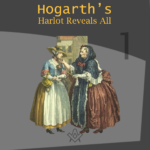 Hogarth’s Harlot Reveals All - Part 1 A new series looking at the hidden Masonic symbolism within Brother Hogarth's works - what can you find? |
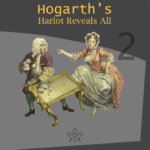 Hogarth’s Harlot Reveals All - Part 2 The second instalment in the series looking at the hidden Masonic symbolism within Brother Hogarth's works - what can you find? |
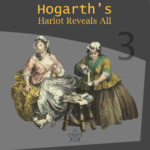 Hogarth’s Harlot Reveals All - Part 3 Brother Hogarth gives us another bawdy glimpse into the salacious world of the 'Harlot's Progress', and the tantalising Masonic symbolism hidden within! Can you spot the clues? |
 Hogarth’s Harlot Reveals All - Part 4 This month we find her in prison doing forced labour. So why, you may ask, is she dressed so finely? This sudden change of costume confused many commentators over the centuries. |
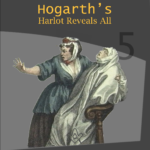 Hogarth’s Harlot Reveals All - Part 5 In last month’s instalment, our Harlot is found in prison doing forced labour. In this instalment the Harlot dies! |
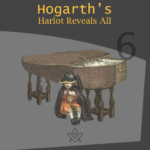 Hogarth’s Harlot Reveals All - Part 6 With our protagonist (the Harlot) lying in her casket, what next for the Widow's Son? |
 Hogarth's Harlot Reveals All - Part 6.2 A naughty clergyman, the virgin, and 'Father Time' - what can Hogarth reveal now?! |
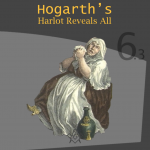 Hogarth's Harlot Reveals All - Part 6.3 Who are the famous men featured in the scene? Hogarth reveals all! |
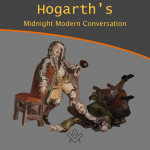 Hogarth's Midnight Modern Conversation Brother Hogarth is back with a look at another work of art with Masonic symbolism 'hidden in plain view' - what is occurring within the Midnight Modern Conversation? |
 Hogarth discreetly embeds more masonic signs and symbols in his paintings , never forgetting, everything he included in his scenes had meaning and is there for a reason. |
 Hogarth discreetly embeds more masonic signs and symbols in A Rake’s Progress, never forgetting, everything he included in his scenes had meaning and is there for a reason. |
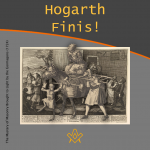 For twelve months Hogarth and his Harlot have revealed all, and the Rake has exposed himself. In this, the last part of the series (for now), we get a final glimpse at a few more of Hogarth's Masonic 'reveals'. |
masonic knowledge
to be a better citizen of the world
share the square with two brothers

click image to open email app on mobile device







